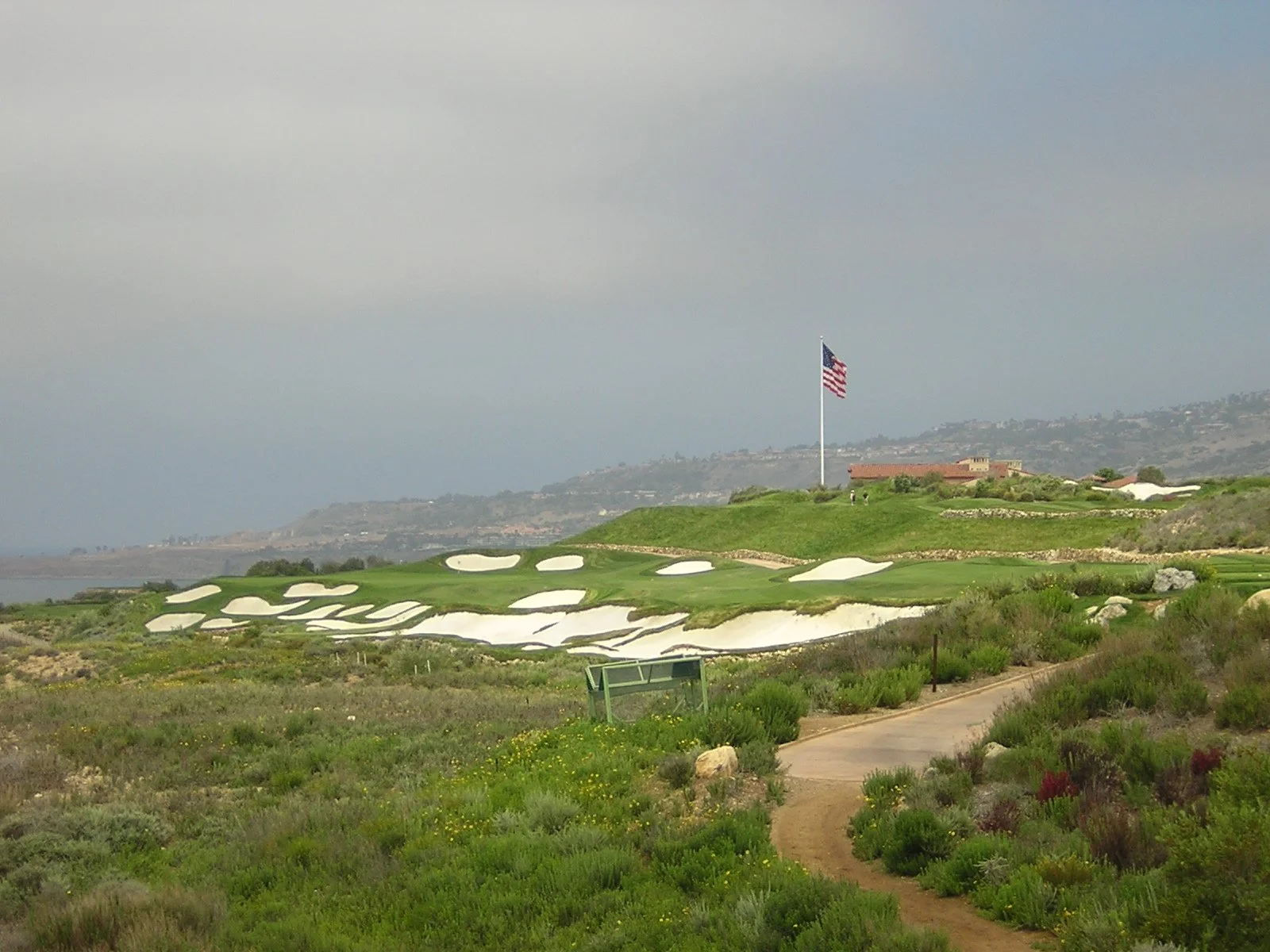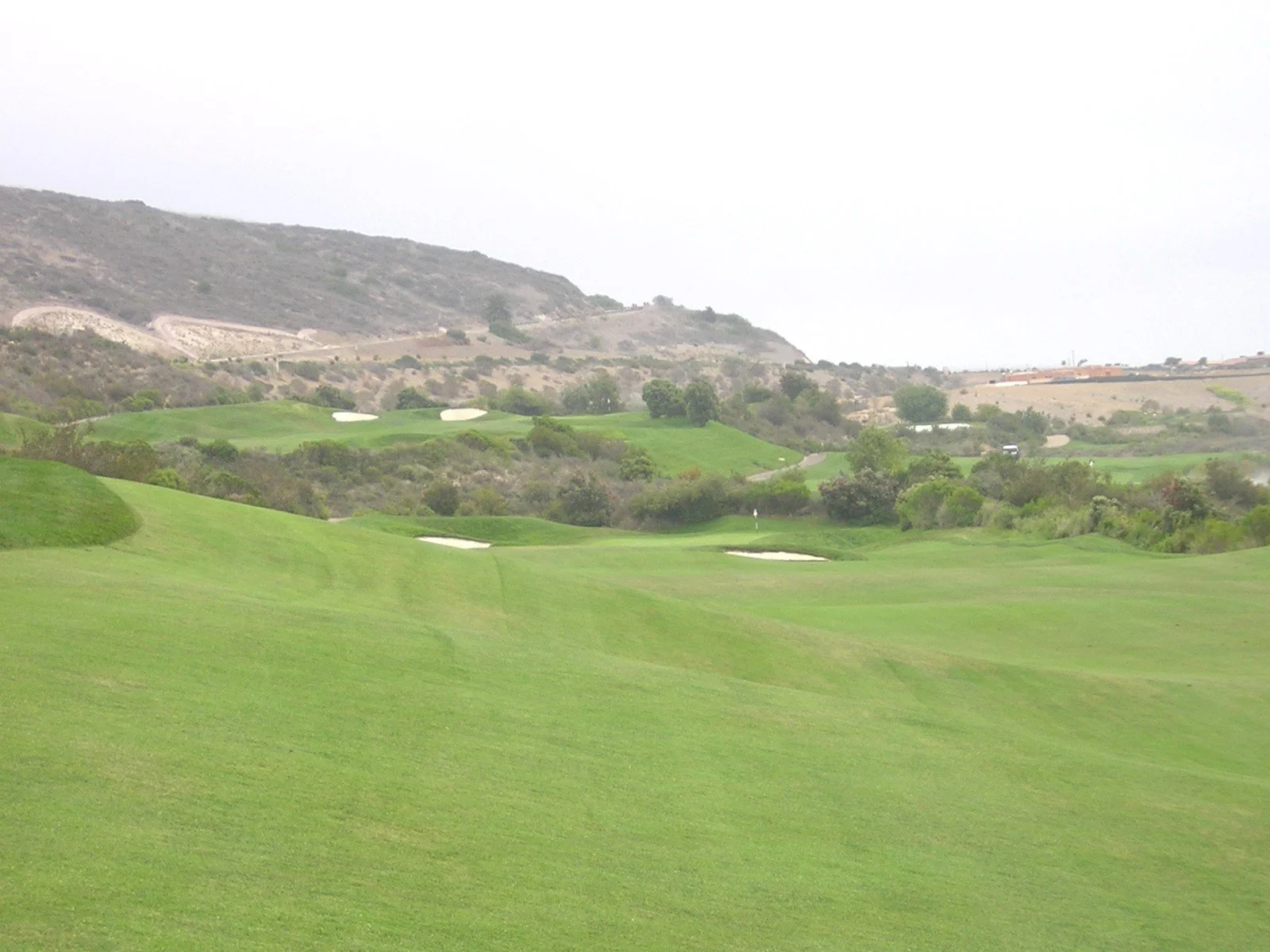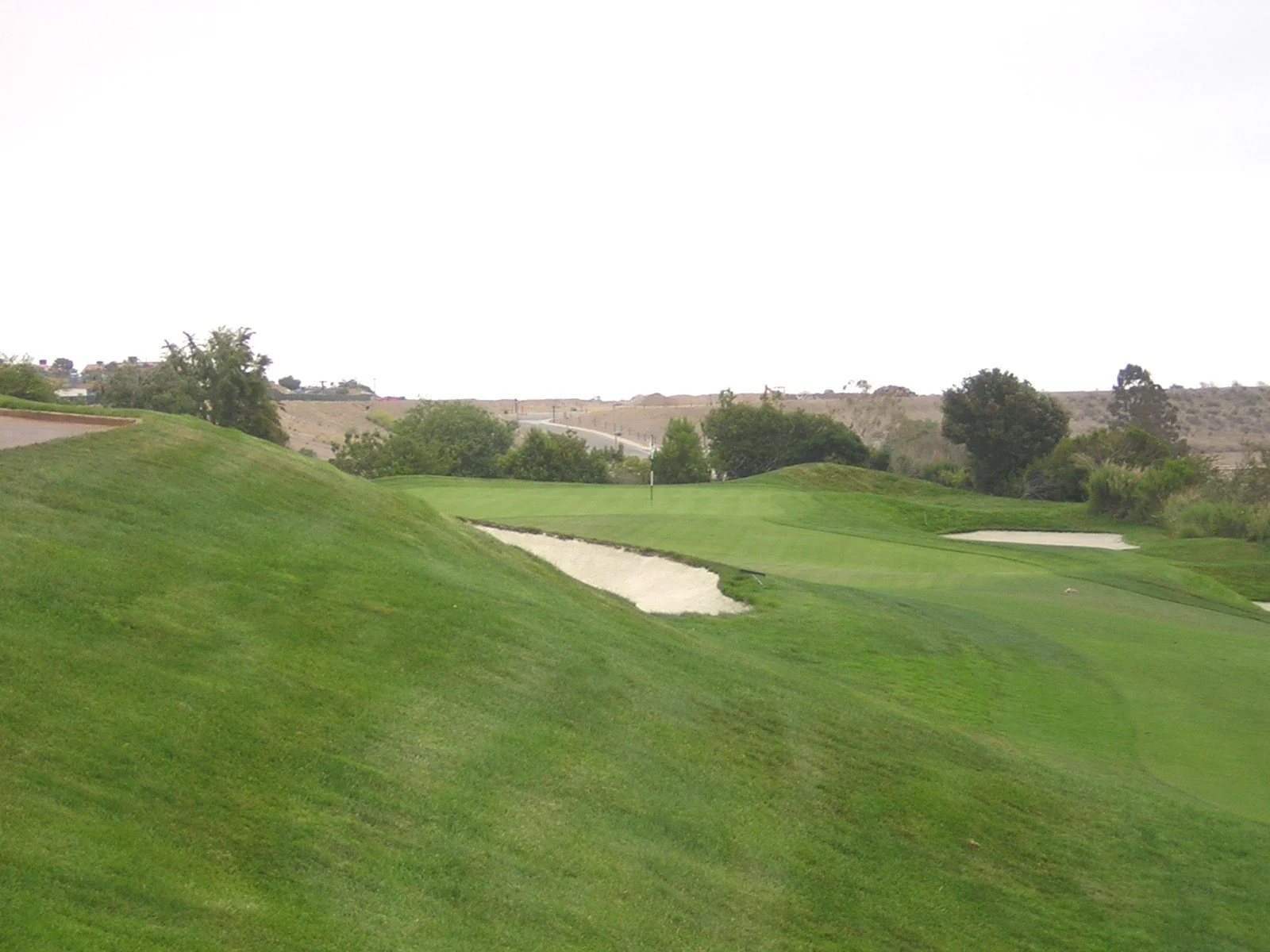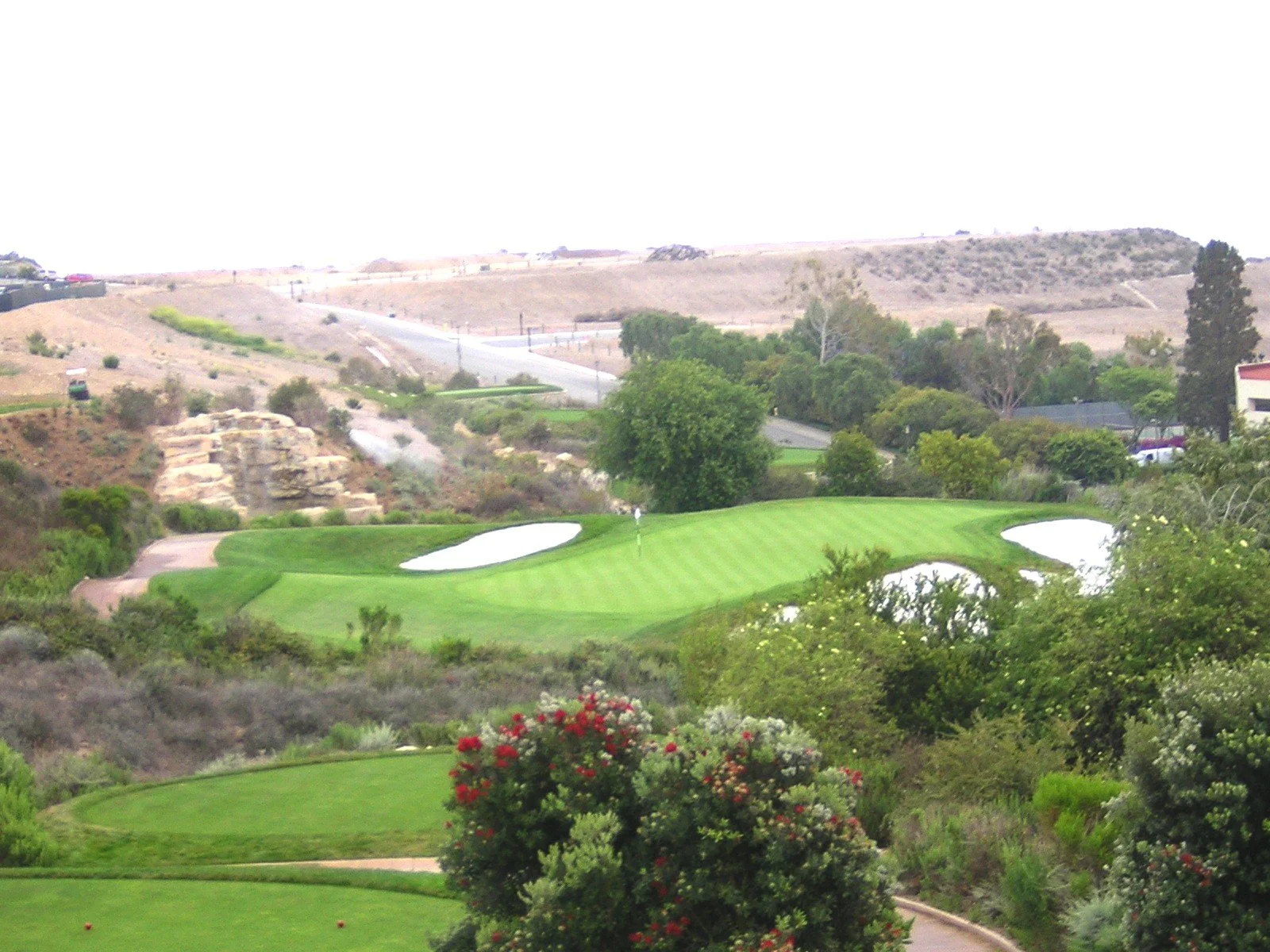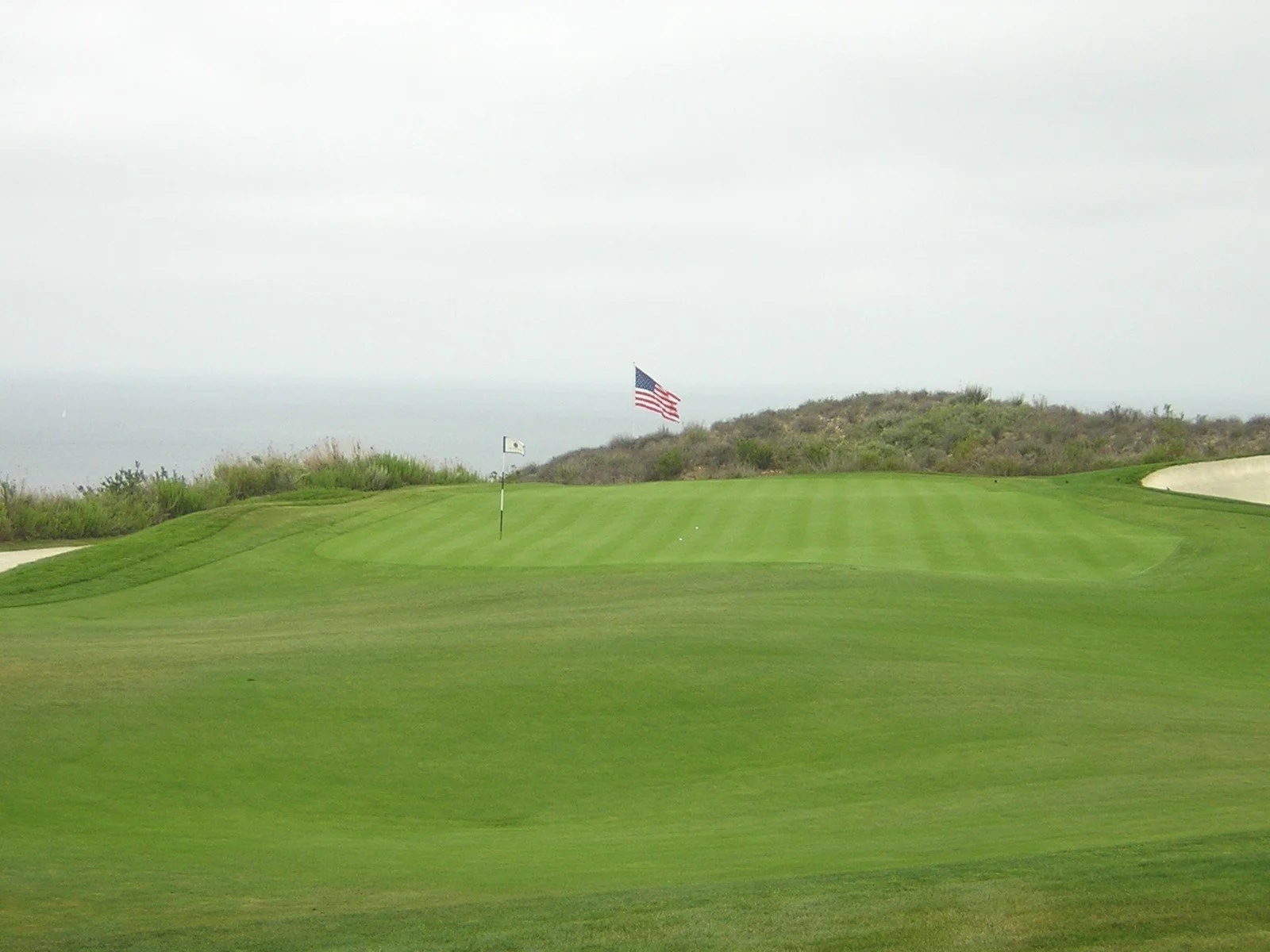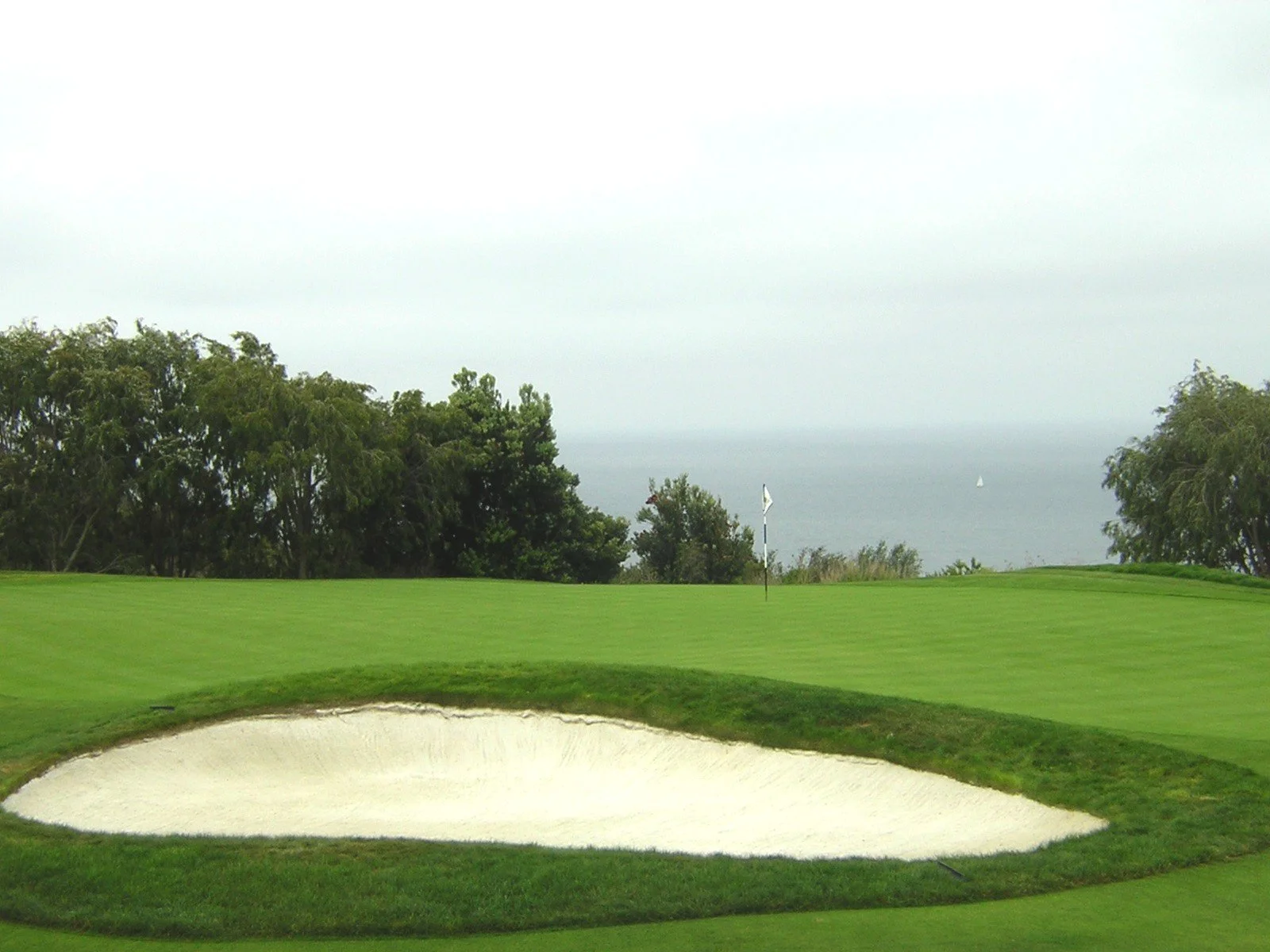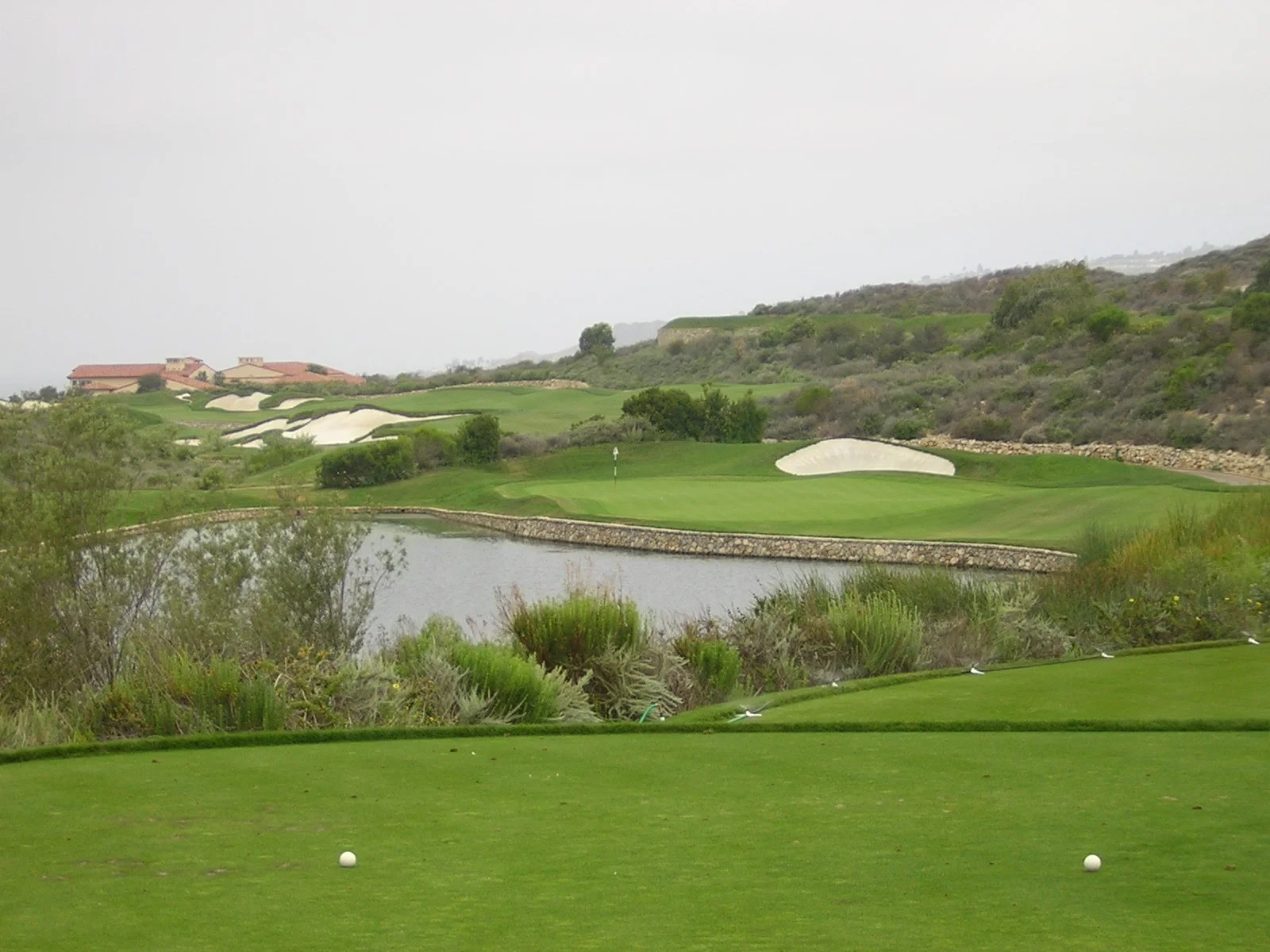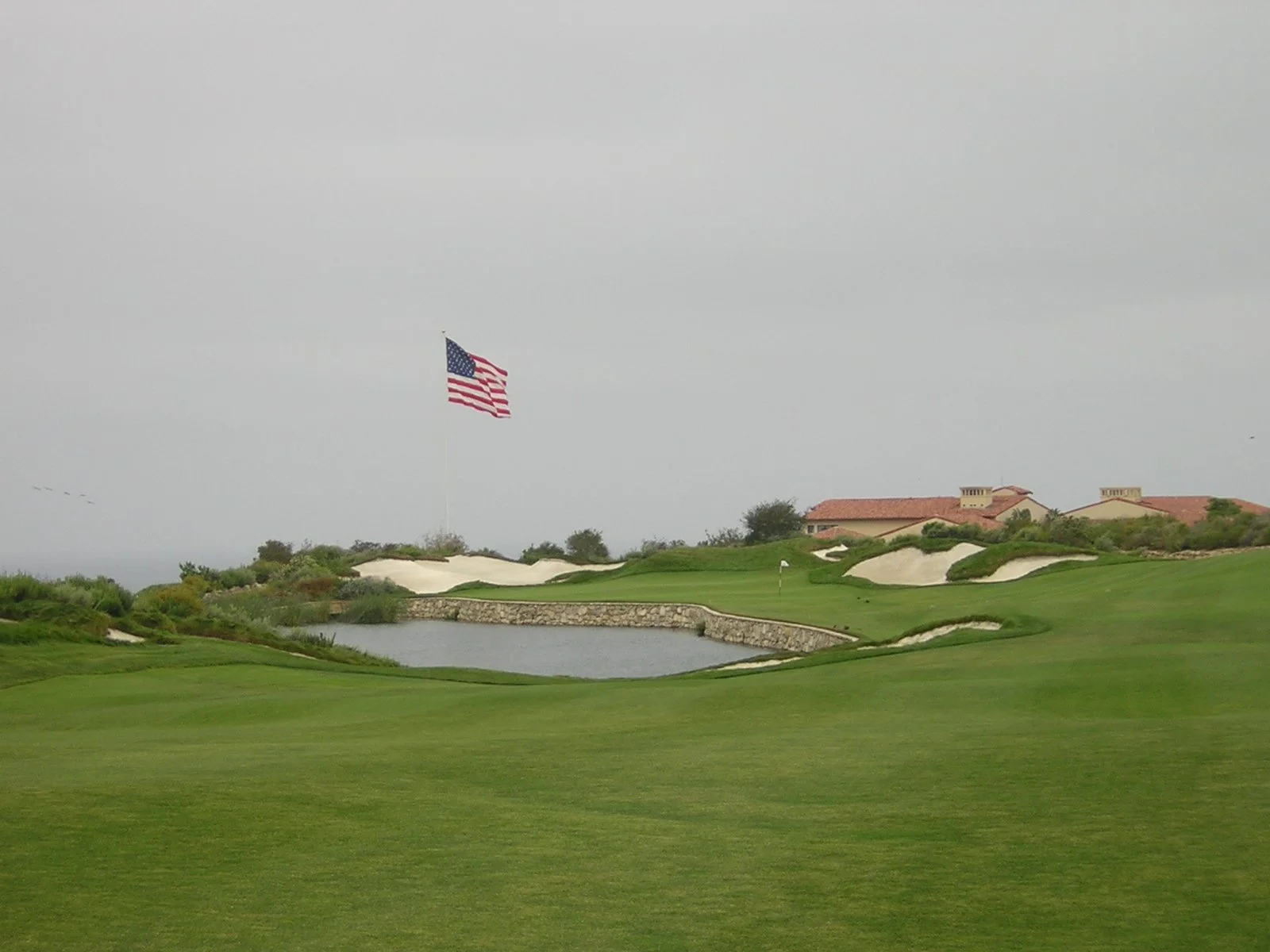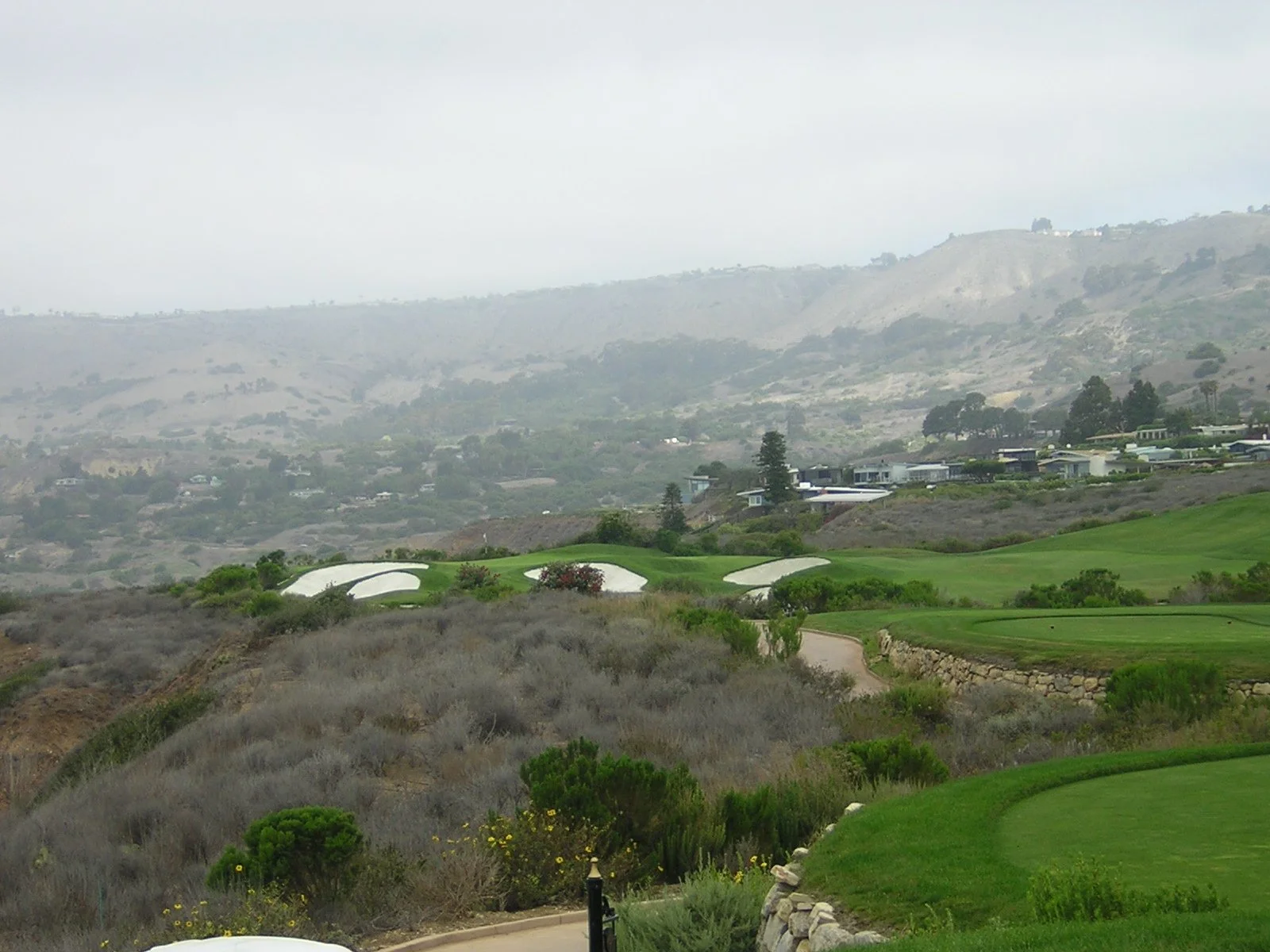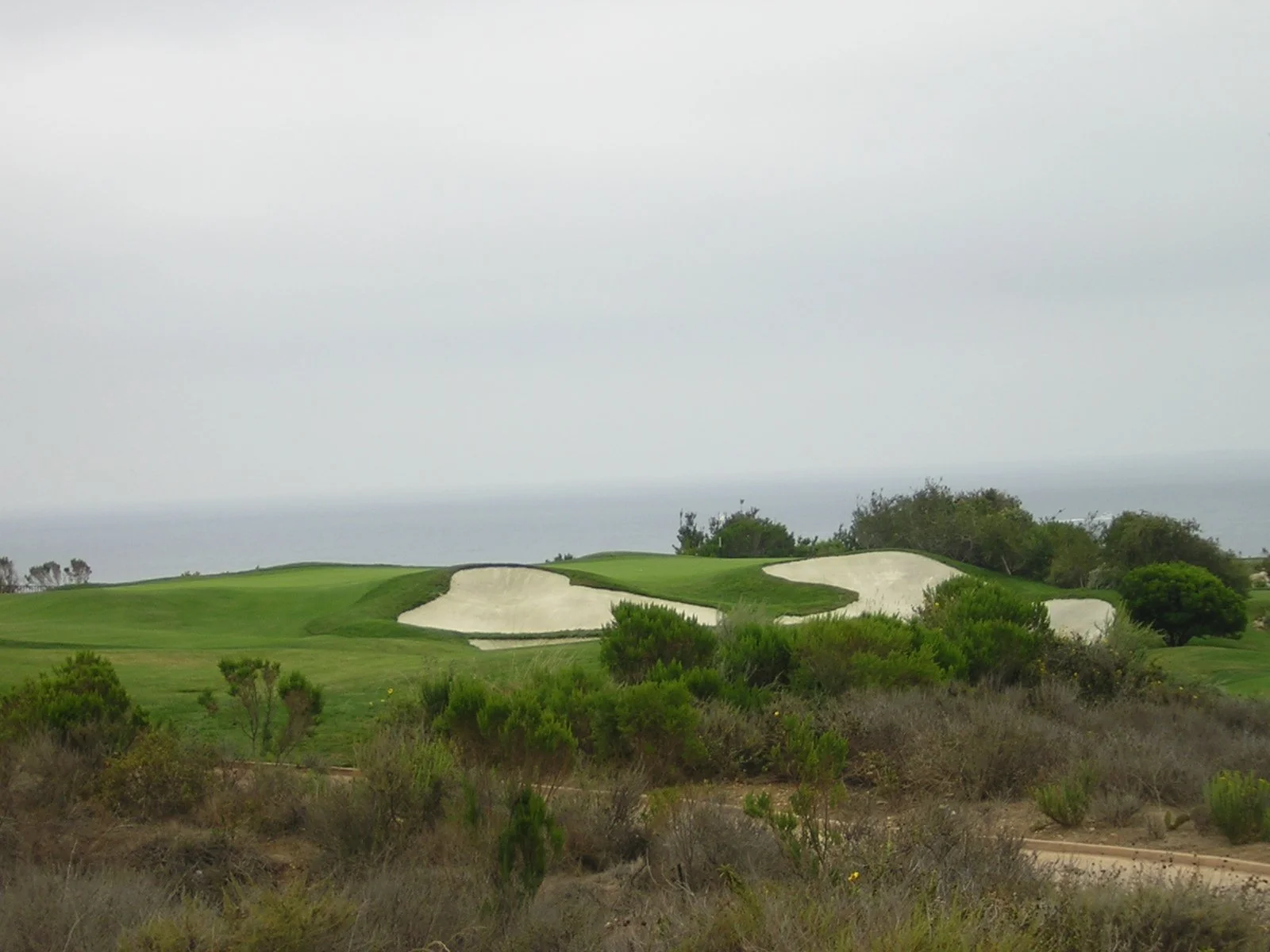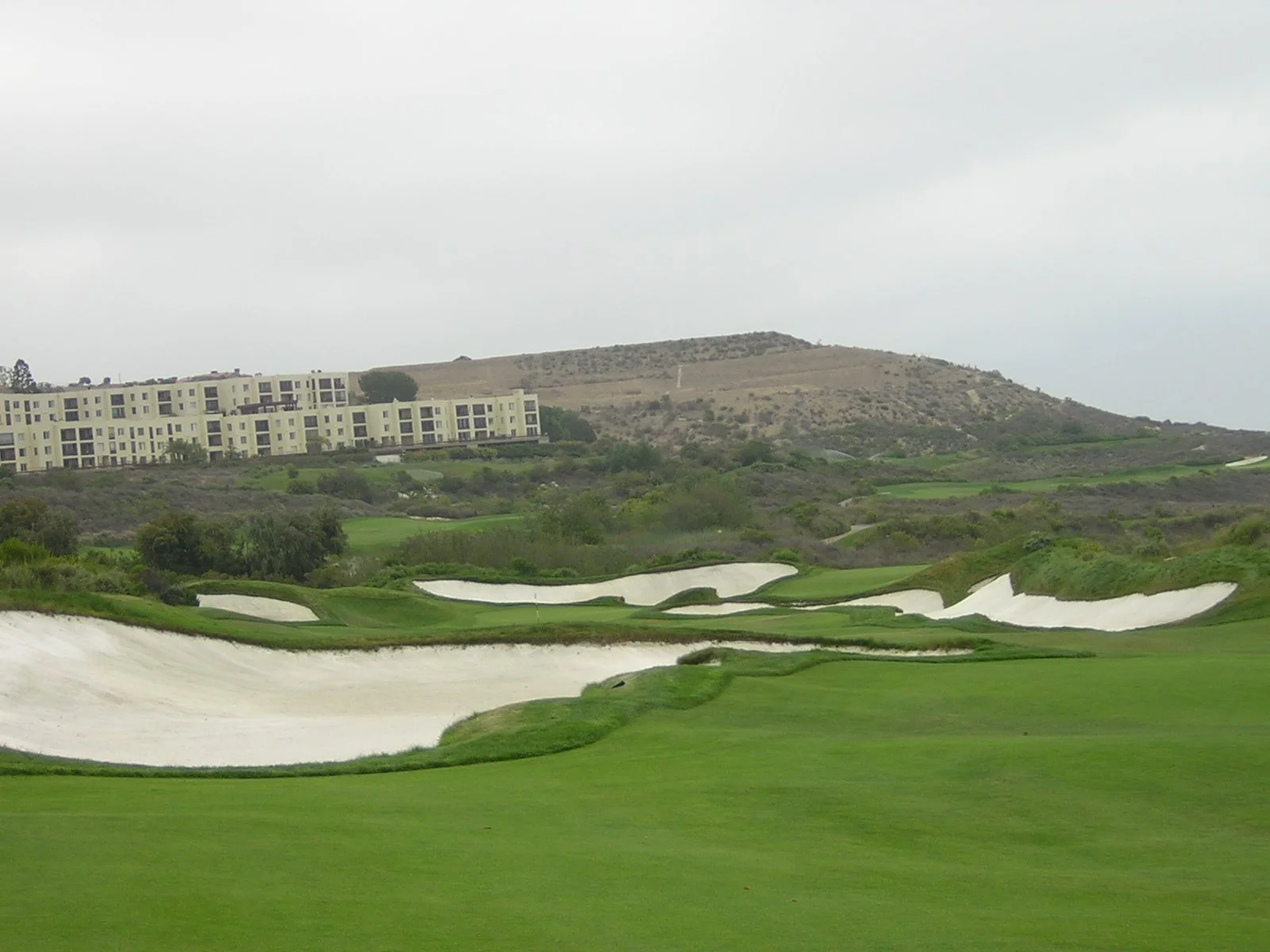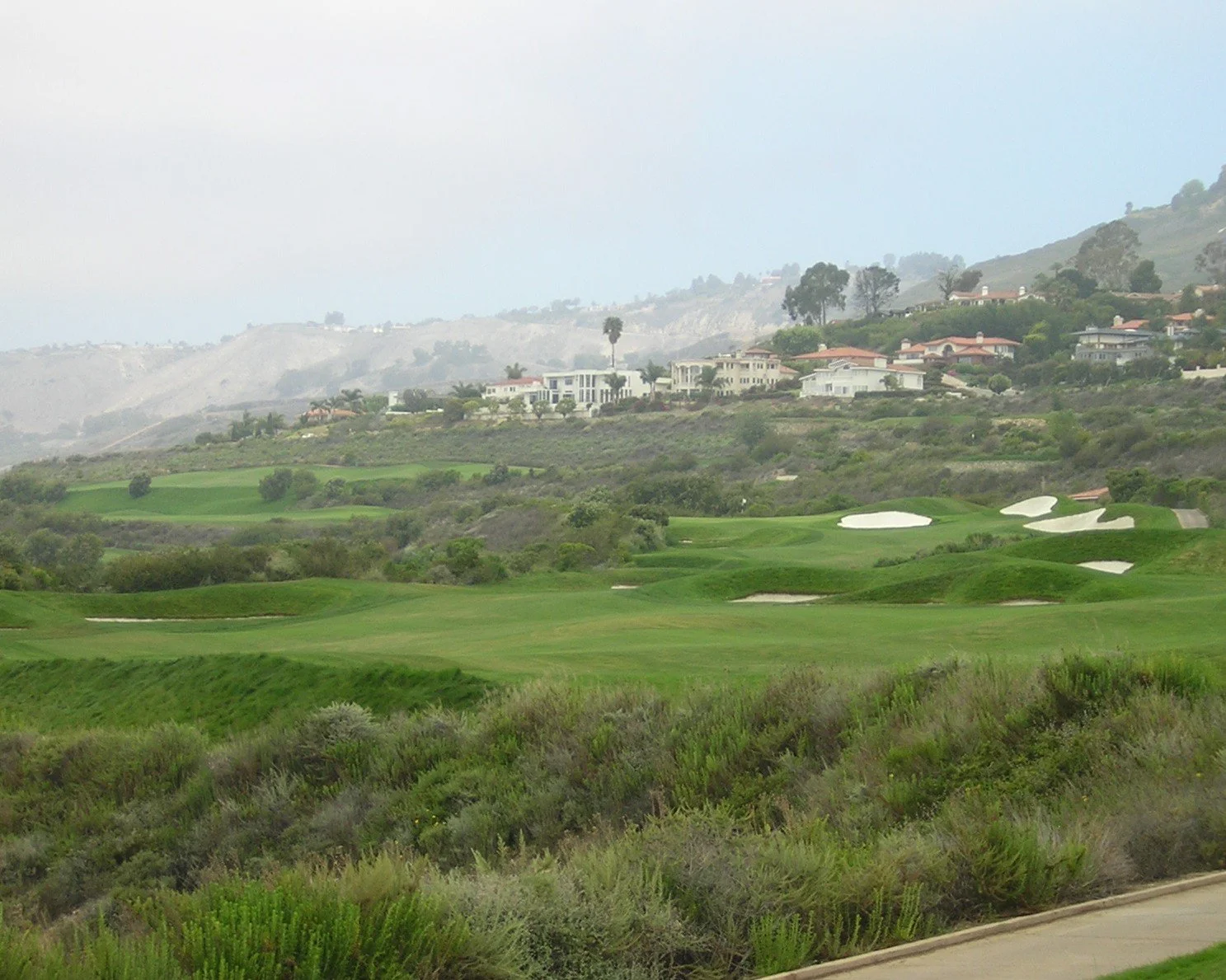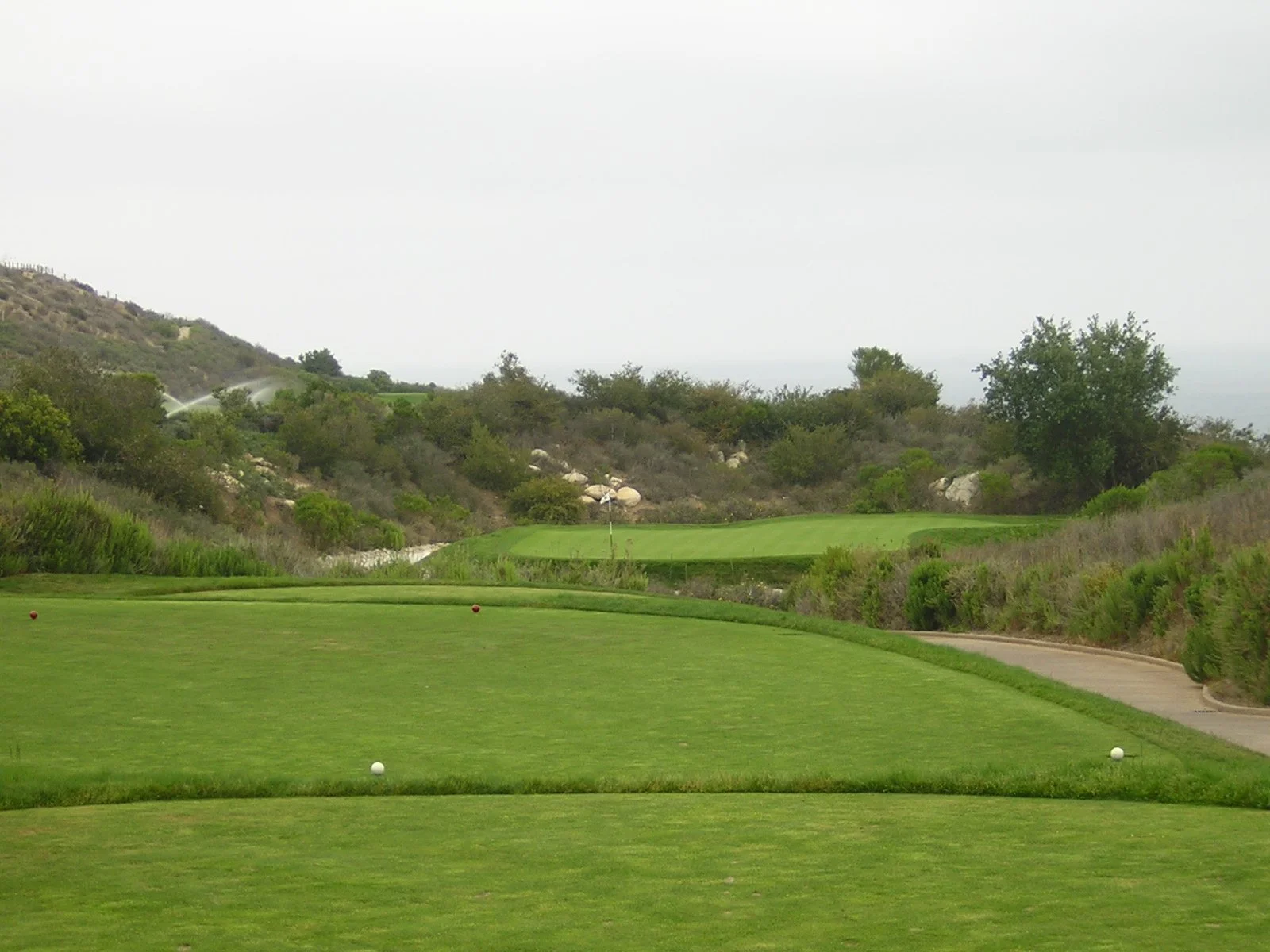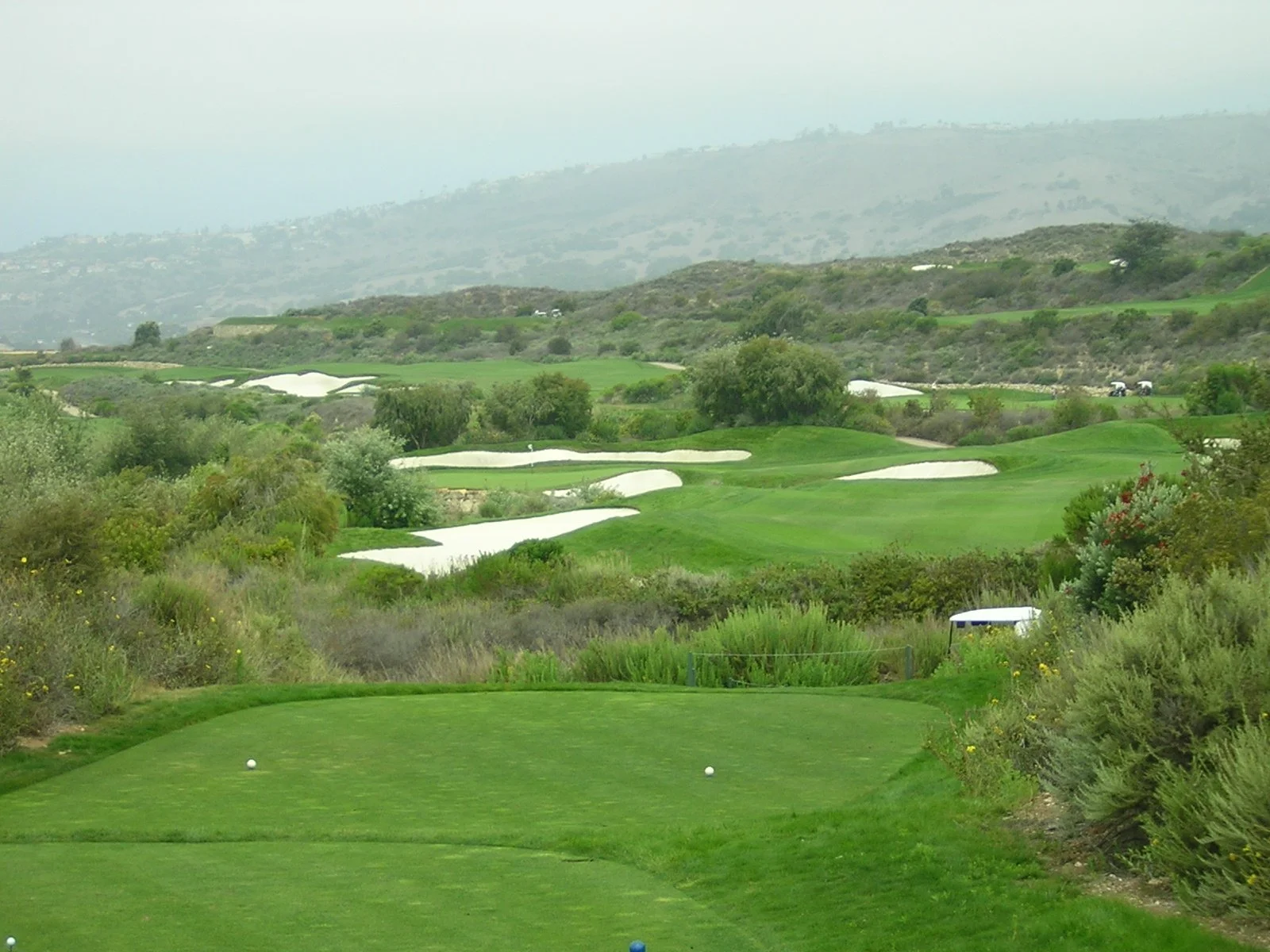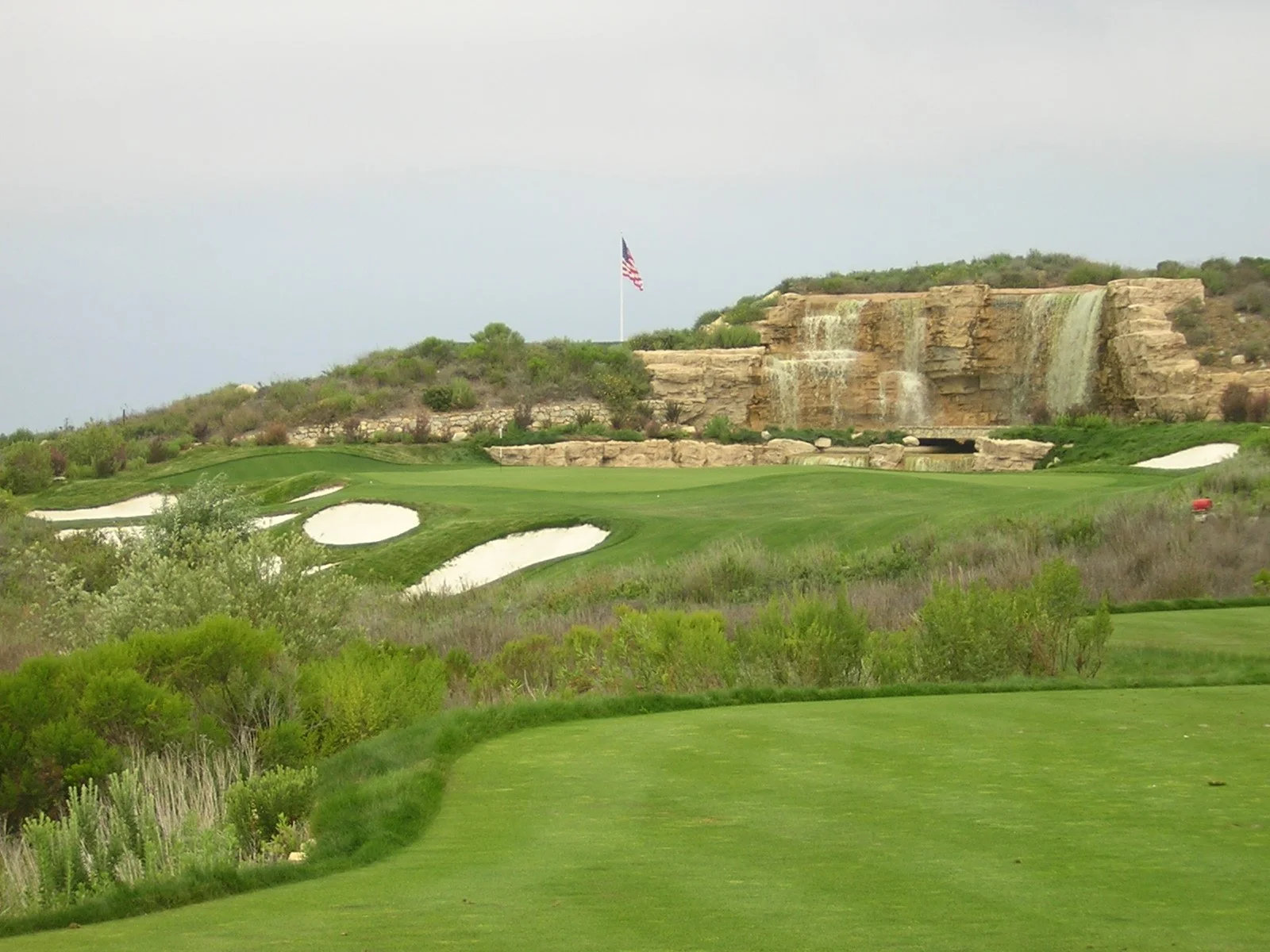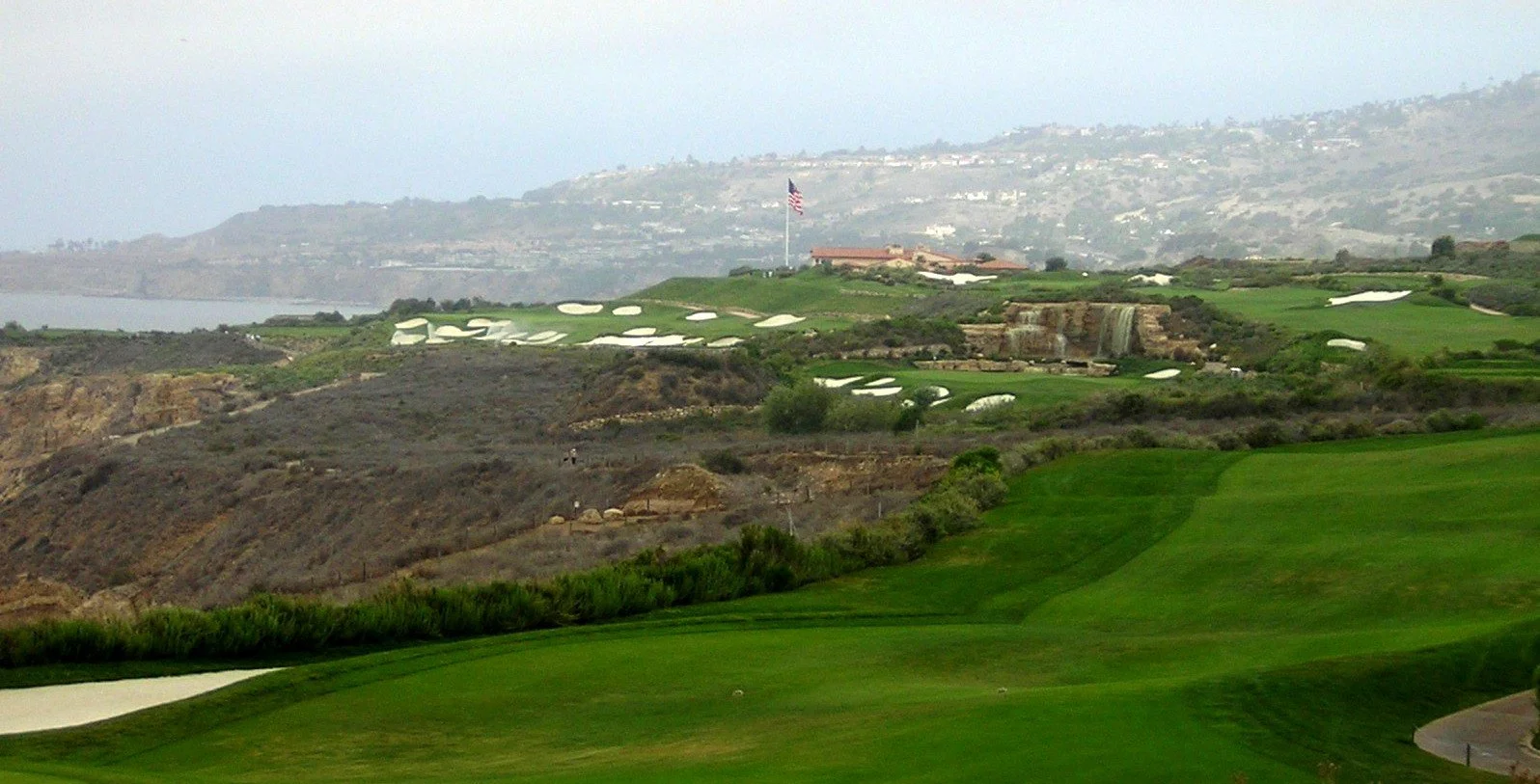TRUMP NATIONAL GC (LOS ANGELES)
Course Architect: Donald J. Trump
Year Opened: 2006
Location: Rancho Palos Verdes, California
Slope: 146. Rating: 75.0
Par: 71
Yardage: 7,311
Hole-by-Hole: 1 - Par 4 370 Yds 10 - Par 4 400 Yds
2 - Par 5 540 Yds 11 - Par 3 239 Yds
3 - Par 4 405 Yds 12 - Par 5 540 Yds
4 - Par 3 180 Yds 13 - Par 4 452 Yds
5 - Par 4 506 Yds 14 - Par 5 615 Yds
6 - Par 4 470 Yds 15 - Par 3 175 Yds
7 - Par 5 580 Yds 16 - Par 4 338 Yds
8 - Par 3 241 Yds 17 - Par 3 238 Yds
9 - Par 4 510 Yds 18 - Par 4 512 Yds
Par 36 3,802 Yds Par 35 3,509 Yds
Awards Won: #15 (CA) Best State-by-State Public-Access - Golfweek, 2007,
#34 Top 100 Courses you can play - Golf Magazine, 2008,
#5 (CA) Best Courses State-by-State - Golf Magazine, 2008,
#1 in Southern California - Fairways and Greens Magazine.
Events Held: Big Break VI (2006).
Websites: www.trumpnational.com, trumpnationallosangeles.com
HISTORY: Let me get this straight. One of the greatest course architects of our time builds a golf course on the Pacific Ocean and you buy the course and want to plow it and start over?
That's the gist of it. Pete Dye, who's designed The Stadium Course at the TPC Sawgrass, Crooked Stick, Harbour Town Golf Links, the Ocean Course at Kiawah Island, Whistling Straits and Casa de Campo (Teeth of the Dog) to name a few, crafted Ocean Trails Golf Club in 1999, as nine holes opened to the public. Just several months later and one month before the final nine was to open, a
landslide demolished the 18th hole. A bluff of 1,700 feet long, 400 feet wide and 70 feet deep, dropped towards the ocean. Since environmental regulations forbid earth to be trucked in, holes nine and 12 were basically used as landfill. By November of 2000, 15 holes opened for play, as work feverishly continued to complete the new 18th, a $20 million expense that forced the original owners to go bankrupt.
In steps "The Donald." That's right, Donald Trump, the billionaire real-estate tycoon, who owns and operates casinos and hotels around the world, purchased the property in November of 2002 for a mere $27 million for the 300 acres.
Regarded as a very pedestrian layout by Dye standards, Trump closed the course in 2004 and began to redesign the entire layout. In fact, Trump is listed as the course architect, his first golf course design.
Some $40 million later to repair the 18th and rebuild the layout, Trump National Los Angeles finally opened in 2006 to incredible fan fare. In just two short years, the course is ranked by Golf Magazine as the fifth best public layout in the state of California. Not bad, considering Pebble Beach, Spyglass, Pasatiempo and Torrey Pines South are the only courses ranked ahead of Trump National.
The Golf Channel put Trump LA on the national scene holding its reality show, Big Break VI competition in the summer of 2006. Duramed Futures Tour player Briana Vega captured the event, as she defeated eight other contestants to earn exemptions into two LPGA tournaments in 2007. Vega was also the ultimate winner, as she defeated Denny Hepler in a nine-hole match to earn $21,000 and a new car. Hepler had won the men's portion of the event.
REVIEW: The opening hole is an uphill, slightly gimmicky par four stretching 370 yards from the tips. The extremely wide fairway allows the player to settle into his round. Driver can be used off the tee, as the fronting pond is over 300 yards from the black buttons. One word of caution, the closer you get to the green, the greater the chance of a blind approach. The green is just 26 yards in depth, fronted by water and rear by more H2O, a waterfall and a massive rock formation. A definite birdie chance, as long as you can stay focused with the waterfall distraction.
Number two is a reachable, downwind par five with a sloping, left-to-right fairway. A drive towards the left side should set up a chance of getting home in two, however the landing area tightens dramatically as you near pay dirt. For those laying up, beware of the pot bunker around the 100-yard mark. The putting surface is quite large, sloping 40 yards from back to front. Sand guards left, right and rear, leaving an opening for those bold enough to go for it. Another birdie opportunity.
The key to the third is the tee shot. With two 25-yard bunkers posing down the right side, the player is forced to avoid the white stuff at all costs. The fairway does slope towards the right, so accuracy is of utmost importance. A successful opening shot will leave just a short iron to a sloping green,
protected by sand and two collection areas. Miss long and you'll have a tough time getting up and down.
The first of five par threes is a downhill beauty, just 180 yards in length. Club selection is key, as the wind is usually behind the player and the elevated tee box can be tough to judge. The putting surface is another obstacle at 43 yards in length with sand right and deep. A back-right pin placement leaves very little room for error.
One of the most difficult holes on the course, the fifth is a robust par four of 506 yards. That's right, 506 yards from the black buttons and you'll need a blast of 252 yards just to reach the fairway. This stretch of the course, from Nos. 5-9, is known as "Trump's Corner," for it's degree of difficulty. You'll need to skirt the 70-yard fairway trap down the left and the tightening fairway down the right. You'll still need a fairway metal or hybrid to reach this narrow green.
Hardly any letup when you reach the sixth, as this slightly bending to the left par four requires more accuracy and length off the tee. Sand on either side of the landing area squeezes the zone to a bare minimum, so you might consider to lay back a bit to the wider portion of the rolling fairway. A mid
to long iron awaits for your approach to another monster green that slopes from back to front, with a ledge in the rear. Four bunkers left and right will certainly keep the attacking player honest.
The long and lean seventh is the second longest hole on the course, a whopping 580 yards. A spine runs through the center of the landing area, forcing the ball position either below or above the players feet. This will make for a difficult layup, not to mention the 100-yard trap on the right and the narrowness of the landing area. If success has been accomplished, then just a little wedge will remain to a fairly simple green, with several traps at attention.
Beauty is certainly in the eye of the beholder and the eighth will get everyone's attention. Slightly downhill, but usually into the wind, the striking par three plays as the longest on the course. The lake guarding the entire left side will capture many an errant shot, while the 50-yard green will be hard on the putter. Although a trap awaits to the right of the putting surface, bailing out is not the worst thing that can happen.
Another demanding tee shot awaits on the ninth tee. The hardest-rated hole on the course, No. 9 is another 500-yard plus par four. The view from the tee of the Pacific Ocean is breathtaking and distracting. The 120-yard long bunker down the left is menacing and diabolical, so play a sweeping draw on this right-to-left-shaped hole and you'll have some sort of success. The approach to the putting surface features a lake down the left and two of the deepest bunkers, one to the rear and one right. The rolling, back-to-front green, features three levels and could play as much as three clubs more if the pin is in the back.
The quirky 10th can play as long as 440 yards or as little as 200 yards, but either way, you'll need to carry the 35-yard barranca that crosses the fairway at the 150-yard mark. On the map, the hole is a dogleg left, with the coast shoreline down below. Play out towards the right, avoiding the myriad of sand down the left side and you'll have just a pitch to this long and narrow green. The slightly elevated putting surface should enable you to get one close for birdie.
Although playing downwind, the 11th is one of the hardest par threes on the course, as fronting bunkers force a long iron carry that rarely will hold the green. The putting surface is quite wide, but just 20 paces in depth, making your tee shot extremely difficult. If the pin is back-right, you'll be hard-pressed to get your shot to land softly and quitely. The bottom line, a par here can go along way on the scorecard.
Certainly reachable, the par-five 12th is the shortest on the course, especially with the wind behind your back. Watch out for the fairway bunker down the left side and you'll be home free. A fairway metal or hybrid should be enough to get you greenside, but waver to the right and you'll end up in
the 120-yard long trap. Just reaching the putting surface is not enough to make birdie or eagle. You'll have to contend with one of the trickiest and wildest green on the course. This multi-tiered putting surface is a roller-coaster ride, sweeping in many different directions. Enjoy.
The 13th features a blind tee shot to the narrowest fairway on the course. Let's not forget that the hole is over 450 yards to boot. Rugged terrain flanks both sides of the fairway, not to mention sand from 90 yards and in on the right. The green is another monster at 45 paces long and two-tiered, so
knowing the pin position going in is a must. This hole is a double-bogey just waiting to happen.
The final par five on the course is an awkward, S-shaped behemoth that stretches over 600 yards. The rolling fairway is lined by deep bunkers on both sides that will make for a difficult layup. Barranca on both sides of the fairway will really put the squeeze on your shot, not to mention your grip. A sliver of barranca juts out around 115 yards out, so you'll need to make a calculated decision regarding your layup. From there, a series of traps front the tidy putting surface that slopes from back to front. Miss long and you'll finish in a wrap-around bunker that's havoc to get out of.
A reprieve of sorts as you play the shortest hole on the course, the par-three 15th. Just 175 yards, the green is virtually surrounded by a "C" of sand and a pot bunker on the right. Just 27 paces in depth will make for a difficult target, not to mention the back-to-front sloping surface. With very little bail out, this hole reminds me of the many at Pine Valley.
Another visual gem, the 16th is one of just two par fours under 400 yards. Doglegging sharply to the left, the key here is to avoid the sand and terrain left, not to mention the lake that protects the left side from 100 yards. The very undulating fairway will leave a very uneven lie, making your approach, albeit with a wedge, much more difficult. Another miniscule green, the putting surface is three-tiered and runs from front to back, dropping almost 10 feet.
Signature holes at Trump National are the norm and the 17th is no exception. Playing back into the breeze, the player's eye is populated by a breathtaking waterfall to the right-rear of the green. Although not in play, the collection pond certainly is. The quartet of bunkers down the left side that sit well below the putting surface are very much in play and make for another difficult up-and-down. At 238 yards, you might need to hit three-metal just to get home!
The closing hole is a marvel in engineering, as it took over $50 million to create after the original design slipped towards the Pacific. You'll need a howitzer from the black tees to reach the fairway on the this robust, 500-yard-plus par four. More than a dozen traps populate this freak of nature and
you'll need every bit of strength and cunning to avoid the white stuff. You're line of sight should be the far right bunker or the flag pole in the distance. From the generous fairway, you'll be faced with an uphill approach to another humungous putting surface that slopes from back to front. Any shot off line will certainly pay the price.
FINAL WORD: It's bold and it's beautiful. What more can you say about a golf course that gives you views of the Pacific Ocean on every swing?
Trump National Los Angeles is a perfect example of what can be done if you have enough money. Donald Trump spared no expense, as evident with his luxurious waterfalls behind the first and 17th holes.
Let's not lose sight of the course itself. This is one tough layout, especially from the tips. Over 7,300 yards and a par of 71, not to mention three par fours over 500 yards! There are five sets of tees, but I would have liked to see another teeing area in between the Blue and Black tees, around the 6,700 range. Maybe a mixture of the two sets
From the moment you drive towards the massive 45,000 square foot clubhouse, you're blown away. Standing tall above the magnificent blue waters of the Pacific Ocean, the clubhouse is as elegant and beautiful as any I've ever seen. Three dining options, a well-stocked and complete pro shop, a full-
service locker room, conference rooms and of course, a grand ballroom featuring a hand-carved limestone fireplace.
The driving range is intense with upwards of 100 stations and a complete short-game practice area, but it's the golf course that's sensational. The conditioning of the layout is wonderful and the waterfalls, albeit, over the top, are stunning.
Although the fairways are fairly generous, any shot off line, will certainly end up in the barranca that line most of the landing areas and juts through many of the holes.
This is one tough hombre, with many forced carries, large undulating greens and deep cavernous bunkers. Just make sure you play the correct tees. All I can say, you better be on your game or you'll suffer the consequences.
On the downside, you'll need a small loan to get the opportunity to play at Trump National (LA). That's because the green fees start at $275 Monday through Thursday and as much as $375 on weekends. I would suggest the twilight rate of $145 during the week, but an afternoon cost of $215 on the weekend is not the end of the world. Just delay one of your credit card payments, it's worth the ride.
With "The Donald" at the helm, this course will only improve with age, not to mention money.
Mr. Trump, you're hired!

